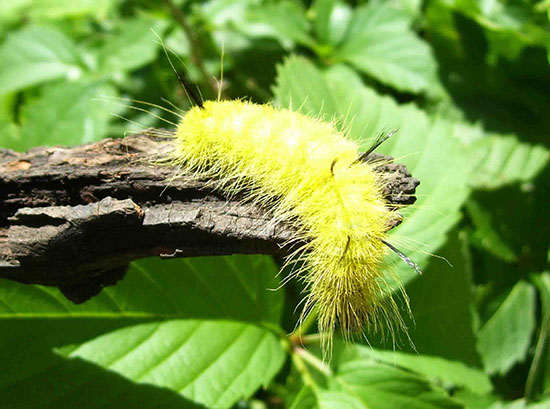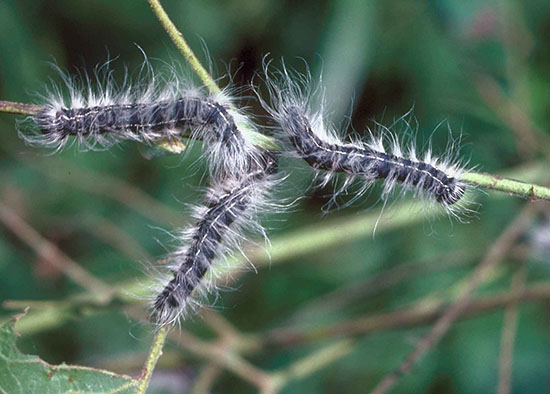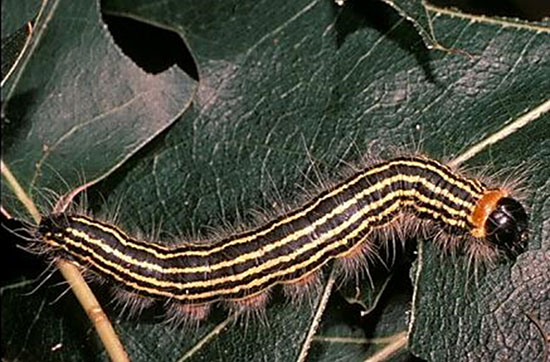Issue 16, September 25, 2017
Late Season Caterpillars
In late summer, it is common in Illinois to have an abundance of defoliating caterpillars on trees. Deciduous trees can cope with this damage relatively well; the loss of leaves this late in the season has little effect on tree health. For this reason, control is usually not necessary.
Leaves are most productive during the first half of the growing season and by now they have produced most of the tree's food. Trees typically do not replace leaves lost late in the growing season. If the tree produces new leaves, this represents an expenditure of energy reserves that the new leaves may not have time to replace.
American dagger moth larvae are white or yellow hairy caterpillars that look somewhat like woollybears, reaching 2 inches when fully grown. Towards the front and middle of the body, they have pairs of "pencils"--very long groups of black hairs that protrude well beyond the other hairs. There is also a pencil at the posterior end of the body. They feed on a variety of trees, preferring crabapple, linden, elm, maple, oak, and willow.

American dagger moth larva.
Walnut caterpillars are most common on walnut, butternut, pecan, and hickory. They are reddish, with a couple of white stripes when young, but turn black, with a couple of thin black stripes and scattered, long white hairs when older. Fully grown caterpillars approach 2 inches in length. Its close relative, the yellownecked caterpillar, is similar in size and color but has many white to yellow stripes. Older, black caterpillars have a characteristic orangish to yellow "neck" behind the head. Yellownecked caterpillar feeds on the same hosts as walnut caterpillar but is also common on maple and oak. Both feed in large groups without a silk tent. They have a curious habit of descending onto the trunk and forming a large mass to molt to the next larval stage.

Walnut caterpillar larvae.

Yellownecked caterpillar black phase.
Fall webworm is very numerous this year, with their large webs over the ends of branches being very noticeable. Remember that the web is water resistant, so to achieve control use sprays with enough pressure to break inside of the web.
Bagworms are numerous. This late in the season, they have already laid their overwintering eggs inside the bags, so it is too late this year for insecticides to be effective. Hand picking and destroying the bags will reduce the number of caterpillars next year. (Phil Nixon)
Author:
Phil Nixon